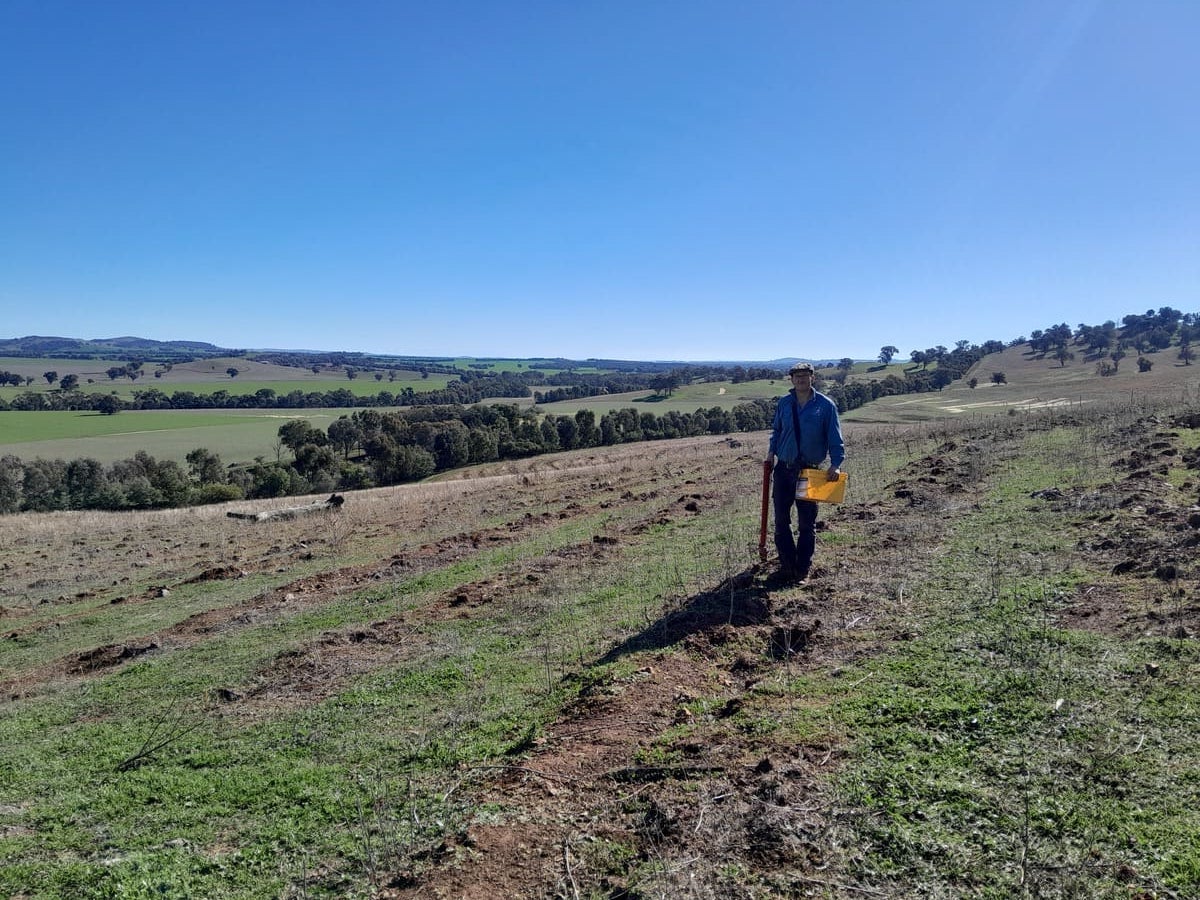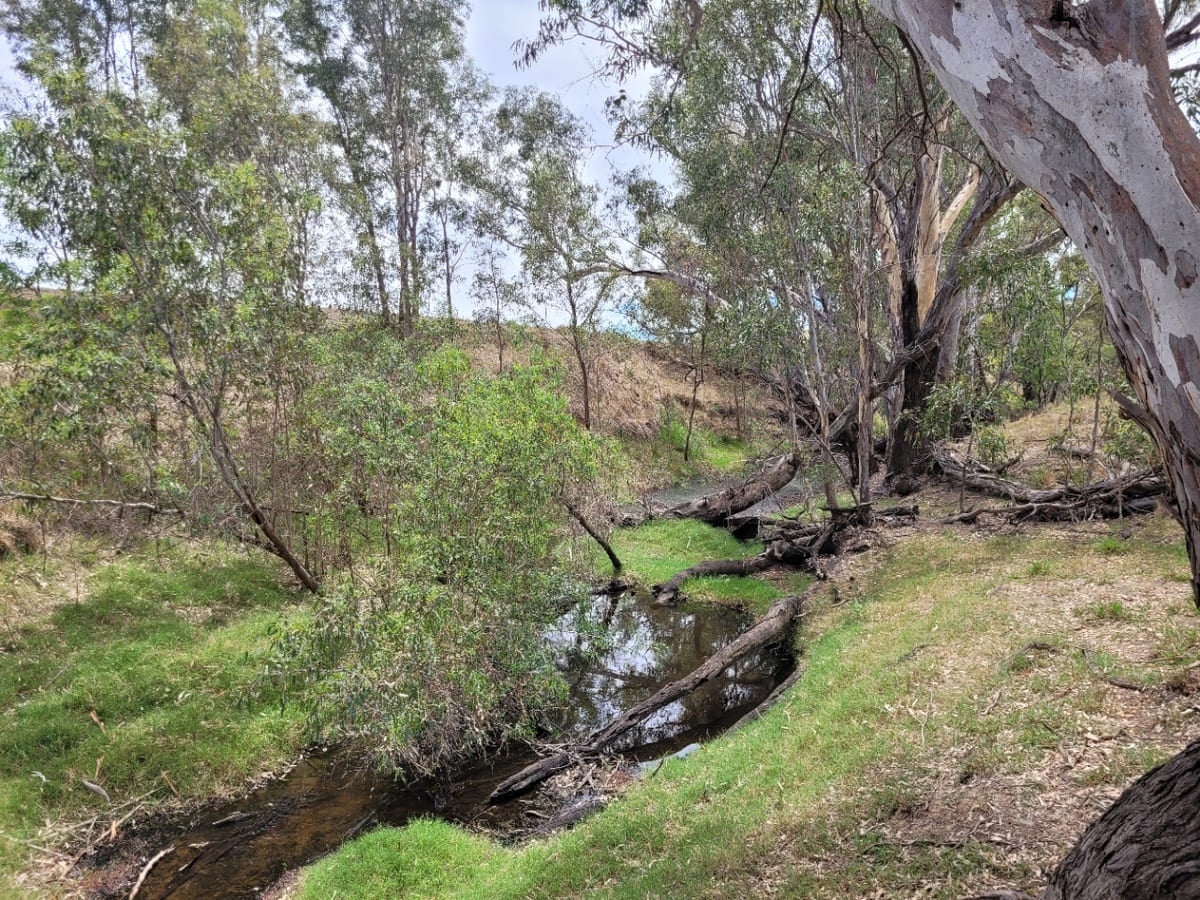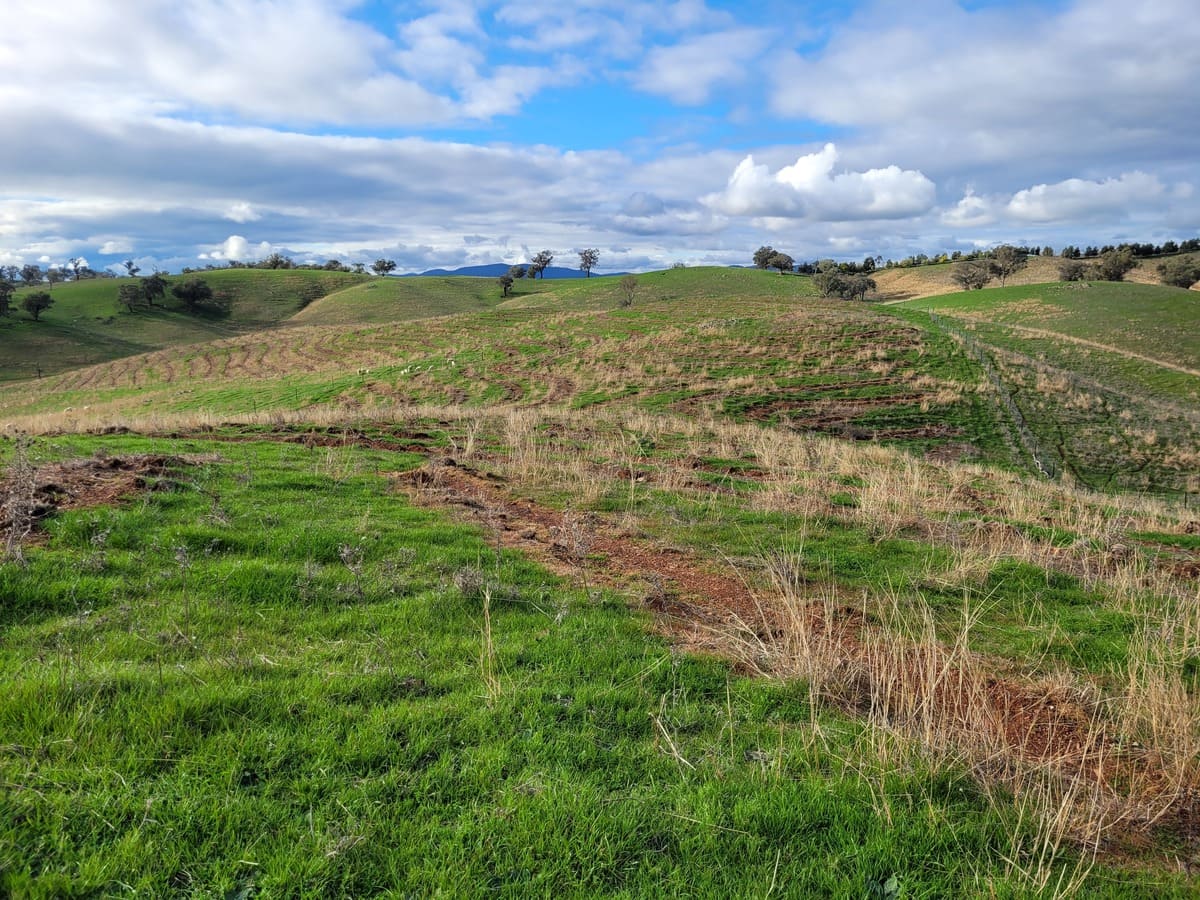Posted by on
06/06/2025
Gundagai grazier John Hindmarsh has been planting trees on his 690-hectare fat lamb enterprise for over four decades, a passion he has passed down to his son, Phil.
Since returning to the farm two years ago, Phil has carried on this legacy, with the family registering an environmental plantings project under the Carbon + Biodiversity Pilot Program. This has seen the Hindmarsh’s plant 14.5 hectares of native trees, shrubs, and understorey species in three block formations, with the plantings completed in August 2024.
Registered under the Australian Carbon Credits Unit (ACCU) Scheme, enabling them to generate carbon credits, their primary motivation, they say, was simply to “plant more trees”.
John, who purchased the property in 1980, began planting trees shortly thereafter. Over the years, his works have included riparian plantings and treed laneways, totalling approximately 27 hectares before the current project.
“The way we started was my sister had a little seedling nursery over in Port Lincoln,” John recalls, “and one year as she was going through, she dropped us a hundred seedlings of different sorts. We put them in the ground on a rocky knob and never stopped. Every year we try and put some in. If we miss some, we put a few more in the next year.”
In 2010, John fenced off and planted along Billabong Creek, helping transform the area with regrowth, mitigating erosion, and rejuvenating the landscape.
“You’d see the lambs tearing along the riverbank until it was just powder,” John says. “And of course when it rained, it ended up in the creek.
“But now it appears to have stabilised. There are big reeds across the bottom of the creek and cumbungi and all these native reeds growing in the water. Every time a flood comes up, they seem to lay down, and the flood goes over them, and then they stand up again. And you can see them building up the debris that falls from the trees, leaves, and the bark. It anchors everything.”

Phil has been inspired, he says, by the transformation.
“Dad has done a wonderful job, and it has definitely rubbed off on me to want to do the same thing – to try and improve and see what you can fence off next and see what other areas we can improve on. Which is why I am very excited to see how this Carbon + Biodiversity Program plays out and to see how the vegetation comes back and the native animals and birds.”
Phil credits the program for helping make the 14.5-hectare planting feasible. “We wouldn’t have been able to have done nearly as much. It would have been financially prohibitive,” he says.
The program covered the costs of seedlings, fencing materials, ripping, and spraying, while the Hindmarsh family supplied the labour. An arrangement, they say, that is similar to other agreements they have had in the past with Local Land Services (LLS) and before that, Greening Australia.
“The labour was never calculated; that was something we had to kick in on our own, which has been the way in the past and is fine by us,” John says.
Sourcing tubestock and seed from their local nursery, a mix native to the local area, the plantings are a mix of trees, shrubs, and understorey species to reflect local vegetation and provide a habitat for native birds.
Other program conditions, they say, include a planting density of at least 200 stems per hectare, avoiding livestock grazing until the trees reach 1.5 metres, and leaving fallen timber within the planting area. With the project under a 25-year permanence agreement.
While the Hindmarsh family describe the application process and documentation as “hefty,” they say it wasn’t “onerous”.
“It was a lot of common sense – things we would be doing anyway,” John says, crediting their local LLS senior officer for their assistance in navigating the paperwork and contract requirements.

Planted in three block formations, two of which link up to existing tree plantings, John says they “tried to follow the contours and incorporate existing trees where possible”.
While the Hindmarsh’s say they will weigh up their carbon credit options as the project progresses, with FullCAM used to generate abatement estimates for vegetation methods under the ACCU scheme, any potential financial benefits from their credits will be a “bonus”.
“The financial reward is important in the sense that it helps fund the next one,” John says.
Phil concurs, adding “as you fence off more and more land you are reducing your ability to graze it and make an income. So something to supplement this potential loss of income is a great thing.”
Citing recognition as not a key motivator – “as you know, you have done a good job yourself” – John says he has seen a change in the ecosystem over the years.
“The whole ecosystem is definitely doing better, with more biodiversity and more insects; it just seems to be functioning better.”
And this, he says, extends beyond their own property. “It’s nice to drive into town and see the tree belts that others have planted. Many are doing their bit and giving it a good go. It’s just great to see that people are doing it.”
For Phil, this ethos is something he looks forward to continuing. “The idea was to come back, learn from Dad, and be home more with the kids – giving them the same lifestyle I had growing up, which was the best.”
Disclaimer: This case study is published by Rabobank Australia Limited ABN 50 001 621 129 AFSL 234700 and Coöperatieve Rabobank U.A. (Australia Branch) ABN 70003917655 AFSL 238446 (together, “we” or “us”). The information in this case study is based on information provided to us by the clients to whom it relates. We have attempted to accurately reflect that information in this case study but do not represent, guarantee or warrant that is complete or accurate. The views and opinions expressed are those of the clients quoted as making them or are paraphrased from information provided by them, and reflect their experiences and judgements. The contents of this publication are general in nature and do not take into account your personal objectives, financial situation or needs. Accordingly, no part of this case study constitutes advice and should not be relied upon as a basis for any business or financial decisions. You should make your own inquiries regarding the contents of this publication. We recommend that you seek independent advice from your accountant or financial adviser before making any decisions related in any way to the contents of this publication. We do not accept any liability for any loss or damage arising out of any error or omission in this publication or arising out of any reliance or use of this publication or its contents or otherwise arising in connection therewith. This publication may not be reproduced or distributed in whole or in part, except with our prior written consent.
